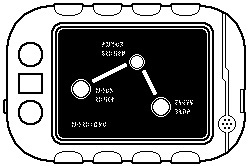Technology level 5
Technology level 5 is the sixth of the Technology level classifications. The defining characteristics of a society having reached TL–5 is the consequences of industrialization expanding into more areas of technology. The consequences of mass industrialization now begin to show rewards to broader population through availability of goods. What were once rare and expensive machines are now cheap and easily available. Virtually every aspect of life acquires some level of mechanization.
In terms of classification TL–5 is the Technological Period of Ur-Tech, the initial planetary bound cycle of development. It also occurs within the Technological Epoch know as the Division of Labor Epoch.
Theoretical Technologies[edit]
- Physical Science
- First estimates of Quantum mechanics and relativity
- Understanding of the structure of the Atom and radioactivity
- Material Science / Manufacturing
- First synthetic fibers like rayon
- Bakelite, PVC, and other synthetic construction materials.
- Biological Science
- Biochemistry - Understanding of how chemistry drives biology.
- DNA - Discovery of the basics of genetics and inheritance of traits
- Discovery of viruses - The smallest sources of disease.
- Cultural Science
- Dictatorships
Quality of Life Technologies[edit]
- Energy
- Petrochemicals - expansion of the petrochemicals as a primary energy source.
- Steam Turbine - Highly efficient means of turning pressurized steam into motion (hence electricity).
- Information
- Electric Calculators - use of vacuum tubes to build simple electrical calculating machines
- Radar and Sonar - Use of radio and sound (in water) as a detection system.
- Communications
- Radio - long distance communications without a connecting wire.
- Radio networking - Building one to many information distribution networks
- Sound recording - Create audio records.
- Medicine / Life sciences
- Internal Imaging - X-Rays combined with photographic techniques to see within the body.
- Crude Prosthetic -
- Antibiotics - Capable of enhancing the body's ability to fight off infections.
- Blood transfusions
- Environment
- Sealed/Conditioned Cities
- Herbicides / Pesticides - Use of chemical controls to enhance agriculture.
Transportation Technologies[edit]
- Land transportation
- Ground Cars - Wide spread use of cars drive development of high speed road networks.
- Tracked Vehicles - Tanks for military applications and tractors for farm work.
- Water
- Steel hulled vessels - larger and better armored war ships.
- Early Submersibles - Battery powered sea worthy submarines.
- Personal Self-Propelled Boats - Small light weight engines drive boats.
- Air
- Airplanes & Seaplanes - Prop driven aircraft.
- Space
- Unmanned Rockets - Liquid and solid fuel system capable of reaching around the globe.
- Satellites - First small objects to orbit a planet.
Military Technologies[edit]
Warfare begins using weapons and tactics including aircraft, armored ground vehicles, chemical warfare, radio communications and remote sensing devices like radar and primitive countermeasures against the same. Early in this period, warfare will use some of the TL–5 advances with TL–3 and TL–4 tactics, resulting in horrific casualty rates, while later TL–5 conflicts will develop the new tactics required for effective use of these weapons.
Advanced materials like aluminum, primitive composites and heavy element penetrators are experimented with, but not in widespread use. Development of heavier-than-air flight brings the use of unguided bombs and manual sighting systems to fire on rapidly moving targets. The first primitive fire control systems using purely mechanical and passive optical elements are introduced. The first electronically enhanced night vision devices appear in late tech level 5, using an active source of non-visible wavelengths for target illumination.
The development of Aircraft are both driven by and foster development of Military applications. This in turn drives development of places to service the aircraft on both land and sea. The initial developments of the aircraft carrier as a water borne landing and takeoff platform.
See Also[edit]
Technology levels[edit]
- Technological Systemics
- Foundational Period
- Interstellar Period
- Galactic Period / Accelerating Tech Level
References & Contributors[edit]
- Marc Miller. Worlds and Adventures (Game Designers Workshop, 1977), 7-8, 14-15,17.
- Marc Miller. Scouts (Game Designers Workshop, 1983), 26.
- Marc Miller. Merchant Prince (Game Designers Workshop, 1985), 34,37.
- Herb Petro. "Tech Level Expansion." Imperium Staple 07 (1986): 3.
- Loren Wiseman. "Twisting Tech Levels: A Traveller Variant." Challenge 31 (1987): 27.
- Marc Miller. Referee's Companion (Game Designers Workshop, 1988), 26-34.
- Geir Lanesskog. World Builder's Handbook (Mongoose Publishing, 2023), 58,83-86.Joe Fugate, J. Andrew Keith, Gary L. Thomas. World Builder's Handbook (Digest Group Publications, 1989), 58,83-86.
- Frank Chadwick, Dave Nilsen. Fire, Fusion, & Steel (Game Designers Workshop, 1994), 6-8,37.
- Greg Porter. Emperor's Arsenal (Imperium Games, 1997), .
- David Burden. Pocket Empires (Imperium Games, 1997), 51-52,108.
- Leighton Piper. "Low Tech." Signal-GK 13 (1997): 30-31.
- Jon F. Zeigler. First In (Steve Jackson Games, 1999), 94-95, 108-117.7
- K. David Ladage, "Alternate Technological Paths", JTAS Online (2001)
- K. David Ladage, "Alternate Technologies II: Relativity", JTAS Online (2001)
- Martin Dougherty, Hunter Gordon. The Traveller's Handbook (QuikLink Interactive, 2002), 378.
- Jeff Zeitlin. "An Analysis of Tech Levels." Freelance Traveller 012 (2010): 10-12.
- Marc Miller. T5 Core Rules (Far Future Enterprises, 2013), 502-507.
- Marc Miller, Robert Eaglestone, Don McKinney. Starships (Far Future Enterprises, 2019), 223-237.
- Marc Miller, Robert Eaglestone, Don McKinney. Worlds and Adventures (Far Future Enterprises, 2019), 19.
